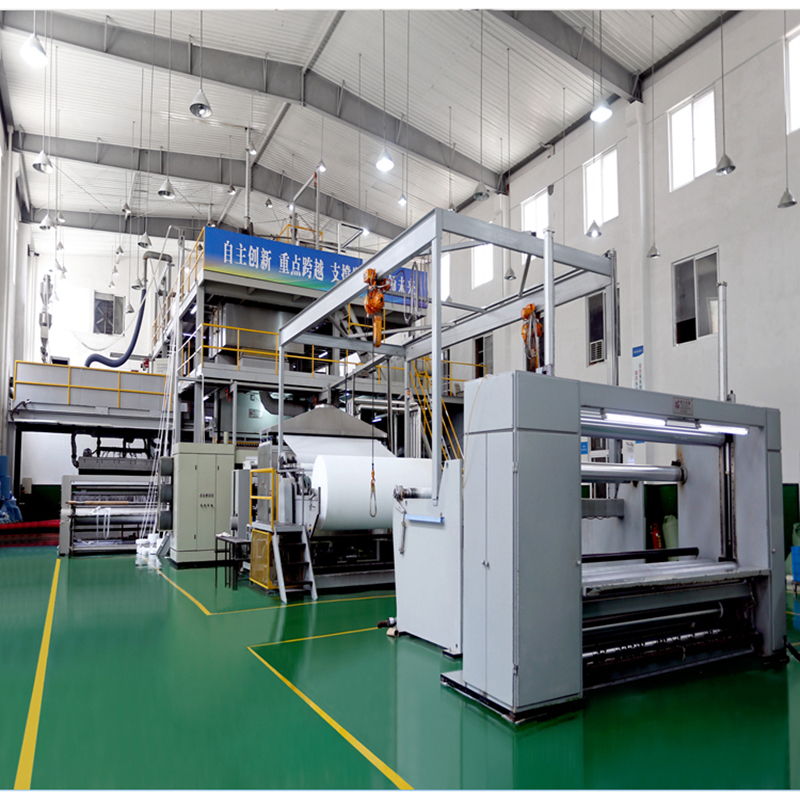Integrating automation into fabric making machines involves several crucial considerations to ensure seamless implementation and optimal efficiency. Here are key factors to consider:
- Machine Compatibility: Assess the existing fabric making machines to determine their compatibility with automation systems. Some machines might require modifications or upgrades to accommodate automation.
- Technology Selection: Choose appropriate automation technology such as robotic systems, sensors, PLCs (Programmable Logic Controllers), or IoT (Internet of Things) devices based on the specific processes and tasks targeted for automation.
- Process Analysis: Conduct a thorough analysis of the fabric making process to identify tasks suitable for automation. Determine which tasks can benefit most from automation in terms of efficiency, consistency, and quality improvement.
- Integration Planning: Develop a comprehensive integration plan detailing how automation systems will interface with existing machines, considering communication protocols, hardware compatibility, and software integration.
- Scalability and Flexibility: Ensure that the automation system allows for scalability and flexibility to accommodate changes in production needs, including the ability to adapt to different fabric types or production volumes.
- Operator Training and Support: Provide adequate training and support to operators and maintenance personnel to familiarize them with the automation system, troubleshoot issues, and optimize its usage.
- Safety Measures: Implement safety protocols to ensure the safe operation of automated systems, China fabric making machine including emergency shutdown procedures, safety sensors, and compliance with safety standards.
- Data Analytics and Monitoring: Incorporate systems for data collection, analytics, and real-time monitoring to assess the performance of automated processes, identify bottlenecks, and make informed decisions for optimization.
- Maintenance and Upkeep: Establish routine maintenance schedules for automated components to prevent breakdowns, ensure reliability, and prolong the lifespan of automation systems.
- Cost-Benefit Analysis: Conduct a comprehensive cost-benefit analysis to evaluate the investment in automation versus the expected improvements in efficiency, quality, and productivity.
- Regulatory Compliance: Ensure that the integrated automation systems comply with industry regulations and standards related to fabric production, safety, and environmental requirements.
- Continuous Improvement: Foster a culture of continuous improvement by soliciting feedback from operators and leveraging data analytics to make iterative enhancements to the automation system.
By considering these factors, the integration of automation into fabric making machines can lead to increased productivity, improved quality, reduced operational costs, and enhanced competitiveness in the textile manufacturing industry.
How do fabric making machines adapt to handle different fabric weights, textures, or finishes?
Fabric making machines are designed to be adaptable to various fabric weights, textures, and finishes to accommodate the diverse needs of textile production. Here’s how they adapt:
- Adjustable Tension and Speed: Machines often feature adjustable tension settings and variable speeds, allowing them to handle different fabric weights without compromising quality or causing damage to the fabric.
- Customizable Settings: Fabric making machines can be configured with customizable settings for parameters such as yarn or fiber feed rates, which can be adjusted to suit different fabric weights and textures.
- Interchangeable Components: Some machines have interchangeable components or attachments that can be swapped out to accommodate different fabric types or finishes, allowing for versatility in production.
- Multiple Fabrication Techniques: Different fabrication techniques within fabric making machines, such as weaving, knitting, or nonwoven processes like carding or air-laying, are adaptable to create fabrics with varied textures and properties.
- Diverse Material Compatibility: Fabric making machines can handle various types of fibers, yarns, or materials, including natural fibers (cotton, wool), synthetic fibers (polyester, nylon), and blends, enabling production of different textures and finishes.
- Specialized Finishing Modules: Some machines include specialized finishing modules that enable the application of treatments, coatings, or additional processes to alter the texture or finish of the fabric.
- Calibration and Fine-tuning: Machines can undergo calibration and fine-tuning to optimize settings for specific fabric characteristics, adjusting parameters like tension, weaving patterns, or stitch types.
- Adaptive Controls and Sensors: Advanced fabric making machines incorporate adaptive controls and sensors that can detect variations in fabric characteristics, allowing for real-time adjustments to maintain consistency in production.
- Flexible Designs: Machines designed with modularity or flexibility in mind can accommodate different fabric weights and textures by adjusting the layout, configuration, or sequences of processes involved in fabric production.
- Process Optimization: Fabric making machines leverage process optimization techniques to tailor operations for different fabric finishes, ensuring the desired texture, sheen, or hand-feel of the final product.
By incorporating these adaptive features and techniques, fabric making machines can cater to a wide range of fabric weights, textures, and finishes, offering versatility and customization capabilities in textile manufacturing processes.
